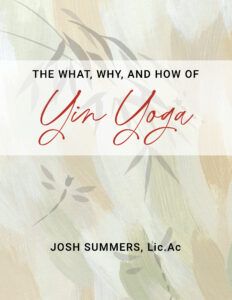Within Indian philosophy, different schools propose different metaphysics and methodologies for attaining liberation from the human experience of anguish. Within the historical context in which the Buddha emerged, one proposition for freedom and happiness was articulated in the Brhad-ahranyaka Upanisad, which many consider to encapsulate the view of Vedanta.
In the BAU (Brhad-aranyaka Upanisad), an individual’s salvation is described as being dependent on one’s returning to a primordial nature of pure consciousness. In this formulation, the essential nature of the person (atman) is equated with the essential nature of the Cosmos (brahman); the two are the same. Microcosm and Macrocosm are One.
Within a metaphysic such as this, a yogi tries to uproot perceptual distortions that cloud or obscure their essential non-differentiation of soul and Universe. A yogi peels back the veils of delusion to uncover an intrinsically essential self-nature that possesses permanence of Being, a continuity of Consciousness, and the unshackled freedom of Bliss.
Being, Consciousness and Bliss are the triad of qualities attributed to this atman/brahman unity.
In contrast to this very attractive metaphysic, the Buddha’s teaching can often look like a spiritual wet rag. Rather than asserting that one’s essential nature is of eternal Being, the Buddha spoke of non-soul (anatta), whereby nothing in one’s experience is compatible with the notion of a permanent, eternal entity.
“The Buddha rejects the reification of being. Accordingly, the Buddha does not seek for a single essence in the world or a living being.” (Gombrich, 2009)
Rather than asserting that an aspect of this Being/soul is an unbroken continuity of pure consciousness, “[the Buddha] likewise rejected the concept of consciousness [as eternal] that went with it: just as being was a process, not a thing, so was consciousness.” (Gombrich, 2009)
And finally, rather than asserting that one’s essential nature is Bliss, the Buddha’s teaching points again and again to the unavoidable qualities of pain, suffering and dissatisfaction (dukkha) in one’s life.
So as an answer to Vedanta’s triad of Being, Consciousness and Bliss, the Buddha responds with anatta (no permanent, unchanging Being), anicca (impermanence) and dukkha (pain, unsatisfactoriness).
Reflecting on this distinction may seem like armchair philosophizing, but frequently, I encounter in my own practice and the practice of students, the mind’s tendency to seek a Vedantic resolution to personal anguish, which from a Buddhist view simply compounds the problem by offering false consolation.
In other words, expectations are embedded within the views we have about our practice. Those expectations will condition our way of holding and relating to our experience.
Let’s say you’re trying to meditate and you find yourself assailed by thoughts, worries and bizarre daydreams. One moment you’re lost in a smoldering regret about a dynamic from over a decade ago. In the next, you are agitated by impatience, waiting for the meditation bell to chime. But before this squirming fades, you’re swept over by a wave of anxiety about a conflict with someone at work, and the thirty nine emails that await a reply.
A Vedantic sensibility might encourage you to disidentify with such thoughts as not being your essential self. The mantra, “I’m not my thoughts,” (neti, neti: I’m not this, I’m not that) gets deployed with spiritual aplomb. You lean back into the eternal Witness that was only, if for a confused second, identified with the dazzling creations of consciousness. Resting into this primordial and pristine Witness, you feel unburdened by identification, let alone the trouble of evaluating the meaning and significance of your thoughts. “Maybe,” you wonder,”this is what the sages referred to as Bliss?”
Before offering an alternative approach to the content of this meditation, I will concede that Buddhist teachings frequently sound uncomfortably close to these Vedantic prescriptions: “Don’t identify with your thoughts; don’t be lost in thoughts, be mindful of them. Thoughts are not-self, like sounds and sensations. No self, no problem.” A refashioned detachment with Buddhist-backed jargon can easily function like a Vedantic doppleganger.
Yet, I will continue to propose an alternative interpretation of the Buddha’s message. Perhaps, in offering his own triadic response to Vedantic metaphysics, the Buddha is imploring us to not look beyond our own experience for the resolution to our human anxiety. Instead, it’s within the very process of our own experience that the liberative key is developed. Through a refined understanding of the process itself — seeing how when this arises so too does that arise, how when this ceases so too does that cease — we may come to a new way of holding and being the process.
Within the hypothetical meditation that I sketched, rather than transcending out of the content or sinking into some deeper truth below the content, a practice within the middle might simply explore the content. How does memory function, what does it condition, what fuels its reappearance? Rather than seeking an essential ‘me’ behind the thoughts, or denying a ‘me’ within the thoughts, we could explore how a sense of me is continuously constructed through our disposition towards thoughts.
By not dangling the carrot of false consolation, the Buddha prods us to awaken to the immediacy of our humanity – our anxiety, pain, hope and despair. And from that position of connection – without recourse to escape – we are able to develop our capacities for compassion and wisdom in relationship to the blood and bones of our human condition.
Originally published on September 7, 2016
Practice Opportunities:

